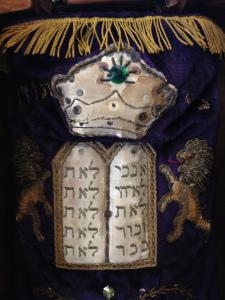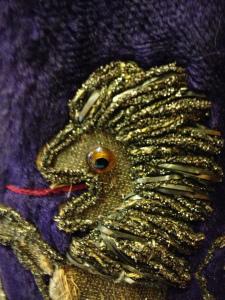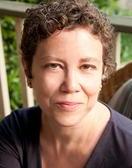
As a parent determined to connect my children to Judaism, as a writer who loves storytelling, as a Jew who grew up wrestling with our ancient texts, I wanted my children to experience Torah. This word, Torah, represents our collective Jewish narrative and thus, more broadly, all of Jewish teachings and practice. But I also wanted my children to interact with the physical Torah: the five books of Moses, hand-lettered on parchment scrolls, dressed in embroidered velvet.
And so it was with great joy recently that I witnessed my community, the Interfaith Families Project of Greater Washington, welcoming our second Torah, as we celebrated the holiday of Simchat Torah. We have been very lucky to have the long-term loan of a Torah for many years now, affectionately known as the teeny-tiny Torah. This first, diminutive Torah was the perfect size for my small son to carry, leaning it gently across one shoulder on his Bar Mitzvah day. And it was not too heavy for my father, then late into his 80s, to pass to me that day, and for me to pass to my son. We will always cherish our community’s first Torah.
Ah, but our new Torah is large and lovely, with an exquisite calligraphy, easy to read, and comes with a fascinating story. And it is a gift to our community, for all time. When one of our members, David Quigley, ran the Hebrew study program for our interfaith children, he consulted with his own inspirational Hebrew teacher, renowned Jewish educator David Norman Furash. Furash was leader of the Community Hebrew School of Dutchess County in New York when David Quigley was growing up.
David Furash’s father rescued this Torah after a fire shut down the “Emerald Street Shul” (Knesseth Israel) in Boston’s South End. The damaged Torah was lovingly stored for 36 years, traveling with the Furash family through years in Massachusetts, New York, New Hampshire, Louisiana and Oklahoma. After David’s death, his wife Sylvia Karkus Furash decided that the best home for the Torah would be in a community that would actively cherish it. And so she came to visit her husband’s former pupil, and our community, and see our children singing and parading behind her family’s Torah, our new Torah.
Master craftsman Pete Flynn, the guitar player who is the heart and soul of our community band, created an Ark (a portable cabinet) for our new Torah with his interfaith son Andrew, out of acacia wood. In the Torah, the followers of Moses used acacia wood to build the Ark of the Covenant, in order to carry the Tablets inscribed with the Ten Commandments. As someone who used to live on the edge of the Sahel, in West Africa, the acacica has special resonance for me. This tree has iconic status as one of the few drought-resistant trees that can grow on the semi-arid plains of Africa and the Middle-East (you may know it as the umbrella-shaped tree in the logo for the PBS program Nature). For desert animals, the leaves, thorns, seedpods and nectar of the acacia are a rare source of sustenance.

Like an acacia tree, our interfaith families community is tough, resilient, sometimes bristling with defensive thorns, but nourishing to those who cross metaphorical deserts to find us. On the day we welcomed our new Torah, we sang: “It is a tree of life to them that hold fast to it, and all of its supporters are happy.” In interfaith family communities, all of us are supporters of the Torah. Whether Jewish, Protestant, Catholic, Unitarian-Universalist, Quaker, Buddhist, or secular humanist, all of us are teaching our children Torah. We are holding fast.
Being Both: Embracing Two Religions in One Interfaith Family by Susan Katz Miller, available now in hardcover, paperback and eBook from Beacon Press. Please support local brick-and-mortar bookstores!
About these ads

